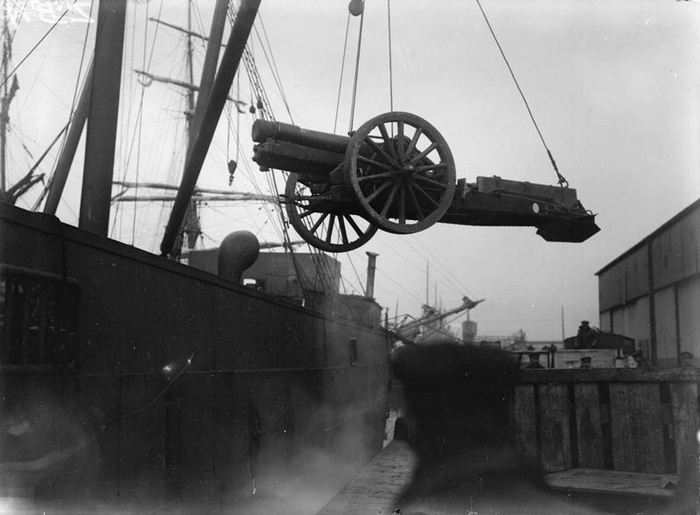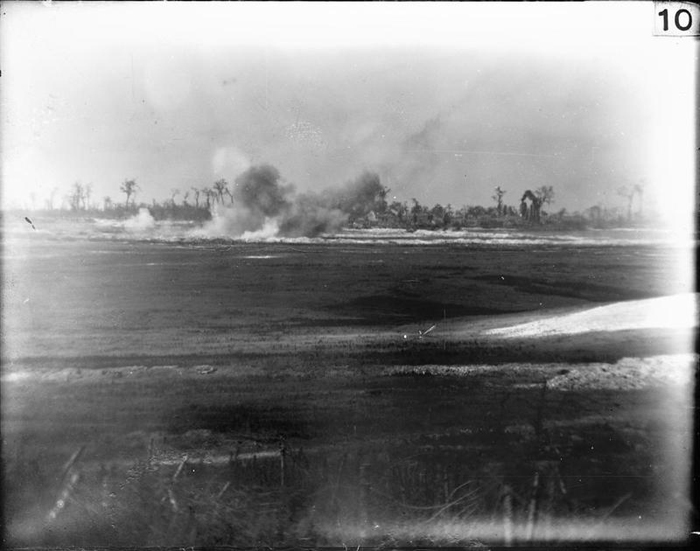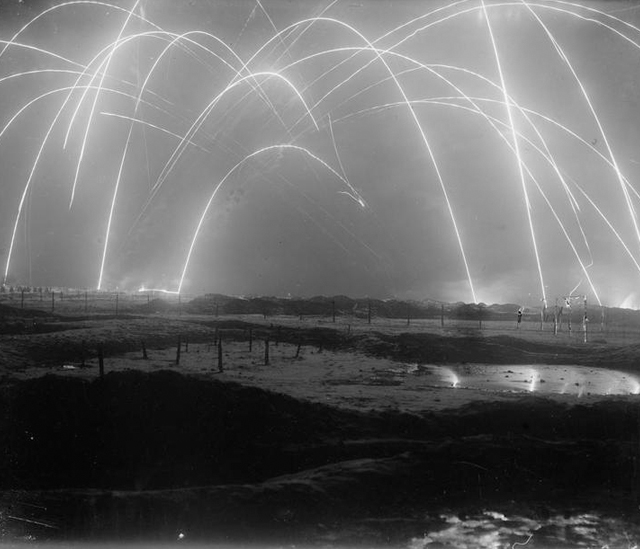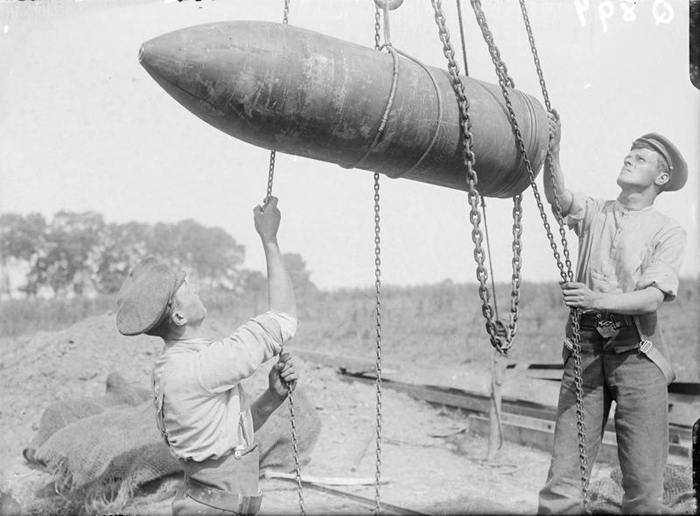Britain may have been at war but most of the population could maintain distance from the fighting. In East Sussex, however, it could not be ignored.

Heavy howitzer of the Royal Garrison Artillery being disembarked ashore after journey from Britain. © IWM (Q 33308)
Historically, the English Channel has done more than simply divide Britain from mainland Europe. It had proved a difficult defensive obstacle to overcome for any invading armies. During the First World War it proved a difficult defensive obstacle to overcome for invading armies. The outbreak of the First World War had brought renewed fears of a possible invasion of Britain, whilst the dark waters of the channel also providing cover for German U-Boats.
However, for most of the war the residents of Britain were not exposed to regular fighting. The casualty figures could not be ignored of course, and there were naval attacks on Scarborough and bombing raids on some cities as the war went on, but life on the Home Front during the First World War was not as fraught with danger as that in the Second.
In East Sussex, however, reminders of the war were never far away. Soldiers from around the world regularly arrived in East Sussex. Training and convalescent camps also began to appear across the Southdowns. More than that though, the proximity of East Sussex to France meant that the sound of large artillery guns and explosions regularly drifted and echoed across the channel.
Fighting on the Western Front
The use of artillery (large guns and cannons that could fire explosives shells great distances) in great numbers was a continuing feature of the First World War. The largest guns used were converted naval guns or railway artillery pieces. British soldiers took to referring to a range of German guns as ‘Big Bertha’ from the actual gun that bore its name to the huge railway guns that attacked Paris. Whilst the First World War has become infamous for the use of machine guns, artillery was responsible for the majority of deaths during fighting.
As the battles during the war became louder so to did the artillery attacks. The German artillery assault on Verdun in February 1916 was the longest and heaviest bombardment of the war to that point and, therefore, one of the largest of all time. Whilst the infantry portion of the Battle of the Somme began on 1 July 1916, it was preceded by a week-long artillery bombardment. Shortly before the infantry attacked on the Somme, the British army detonated explosives that had been tunneled under German lines. The detonation of a mine underneath the Hawthorn Ridge Redoubt was captured on film for the successful wartime documentary The Battle of the Somme. The nearby Lochnagar Mine was detonated at 7.28am on 1 July 1916. The explosion from 66,000lbs of ammonal was, at the time, the largest man-made sound in history and was heard in London.
Hidden in the noise

British artillery bombard the German trenches immediately prior to the attack, Beaumont Hamel. © IWM (Q 90)
The sound of fighting in France and Belgium would have been an eerie reminder for those in East Sussex of the destructive nature of the war. Prolonged periods of fighting would bring inevitable casualties. For those living in East Sussex, this meant long and anxious waiting to hear if the sounds they’d heard would translate into a personal tragedy.
However, such was the nature of fighting that the sound of guns from across the channel could also hide or disguise the different ongoing battles. Whilst the artillery bombardment that preempted the attack on the Somme was clearly audible at home, it also suggested a uniformity to the fighting that was not true. Whilst people in East Sussex could hear the sounds of the largest guns around the Somme, they would likely have missed those that signaled an utter disaster for their loved ones in uniform.
The attack by Southdowns Battalions on 30 June 1916 began in the early hours of the morning and, by the end of the day, had caused the deaths of hundreds of men. It had been a diversion to lure German soldiers away from the planned offensive the following day.
The noise of the attack by the Southdowns was likely lost among the general sounds of battle. The disaster of 1 July 1916, ensured it was lost from the British Official History as well.









